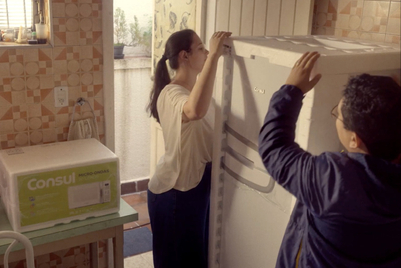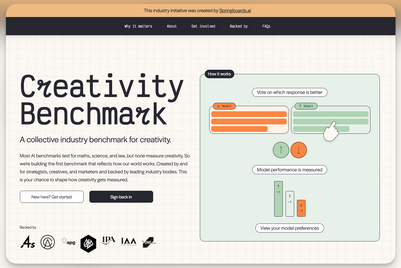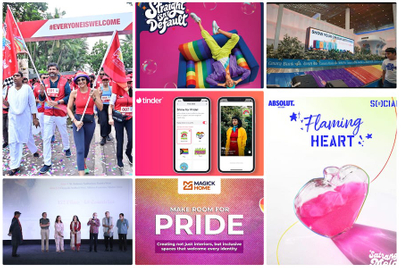
It was some time in the 1920s when the bustling streets of New York City witnessed a transformative moment—a moment that would intertwine the realms of public relations (PR). The air was thick with anticipation that a group of determined women were ready to make a statement that would resonate through the ages.
This was the dawn of the ‘Torches of Freedom’ campaign launched by the father of PR, Edward Louis Bernays (1891-1995). At a time when societal norms dictated that smoking was a symbol of masculinity, these brave women decided to challenge the status quo.
They came together on Easter Sunday, dressed in their finest attire, carrying the weapon of unwavering resolve and high spirits. They held aloft their cigarettes, igniting the streets with a powerful message of liberation in the form of smoke!
Bernays recognised the pressing need to challenge the pervasive gender bias of his time. He saw the potential to reshape public perception—not just about a product, but about the very role of women in society.
His innovative approach aimed to make society address women as a symbol of empowerment. As the women marched in protest, their cigarettes became a powerful metaphor for freedom, breaking down the walls of stereotypes that had long confined them.
What was once considered scandalous was now framed as an act of defiance and assertion of identity. The ‘Torches of Freedom’ campaign ignited a nationwide conversation about women’s rights and societal acceptance, marking a pivotal moment in both—PR and the ongoing struggle for gender equality.
A turning point
The profound impact of Bernays’s campaign was not just to sell cigarettes; but setting a new narrative—a story that sold a message that women could express their independence without fear of social judgment. This campaign marked a significant turning point in PR history, showcasing how it can influence social issues and contribute to the broader discourse on gender equality.
Over a century has passed, and while ideas and concepts have evolved, the issue of gender disparity remains. According to the World Economic Forum (WEF), it will take another century before true gender equality becomes a reality.
Numerous factors contribute to persistent gender inequality around the world. Issues such as uneven access to education, lack of employment equality, systemic racism, entrenched societal mindsets, and lack of bodily autonomy—all play key roles in this ongoing struggle.
The WEF’s global gender gap report reveals that as of 2024, the global gender gap is approximately 68.5% closed showing only 0.1% improvement from the previous year. Well, following the footsteps of Barneys’, a few innovative PR strategies are breaking down barriers and igniting change, challenging entrenched gender stereotypes, while inspiring individuals to rethink their beliefs.
In a remarkable effort to challenge and redefine gender stereotypes, the Lego Group launched its ‘More Than Perfect’ campaign as part of the broader ‘Play Unstoppable’ initiative. Designed by Exposure London, this innovative campaign struck a chord worldwide, ultimately winning a Gold award in the PR International category at The Drum Awards.
The campaign achieved recognition without any paid promotions relying on the powerful resonance of its message. As a result, it garnered substantial media attention and sparked a global debate about the biases present in gender and language, once again highlighting the impactful role of public relations in advocating for change.
Some home truths
In the heart of India, a nation rich in culture and history, an urgent battle simmers beneath the surface—one that threatens the very essence of womanhood. Amidst vibrant streets and bustling markets, women face a daunting landscape marked by workplace harassment, human trafficking, and domestic violence.
Their stories echo in the shadows, woven with threads of sexism that permeate art and language, and the harsh reality of child marriage looms heavy over their futures. The alarming rates of sexual violence paint a grim picture, as countless voices cry out for justice in a legal system that struggles to listen.
According to the Gender Inequality Index, India ranks 129 out of 146 countries surveyed, dipping slightly due to setbacks in educational attainment and political empowerment for women. Yet amidst these struggles, the nation has begun to witness resilience, with improvements in economic participation and opportunities for women taking root. This juxtaposition of despair and hope reflects a complex picture of womanhood in India, which highlights both the challenges faced and the strength within.

Amid the ongoing struggle for gender equality in India, UN Women highlighted the desire to challenge and change the portrayal of gender in media. In collaboration with the Unstereotype Alliance, its ‘#YouDontSeeMe’ campaign shed light on some harsh truths.
A staggering 87% of respondents felt women were often confined to traditional roles in advertisements, while 86% saying the same for men. Through this initiative, the campaign aimed to bridge the gap between media depictions and the lived realities of gender, utilising the broad reach of advertising to promote messages that celebrate gender equality.
Reliance General Insurance Company Ltd’s #AajNahiRozHi campaign for International Women’s Day 2024, resonated with a profound message: every day offers a chance to recognise the contribution and respect of women as equals—not just on special occasions but always.
It served as a poignant reminder of the invaluable contributions women have made throughout history and encouraged society to appreciate their efforts in daily life, transforming the narrative of recognition into an enduring practice of respect and equality.
While the examples given may be limited, they highlight how PR is empowering people to reclaim their voices and raise awareness about gender bias. Through impactful storytelling, these dynamic campaigns illuminate the challenges faced and the changes needed, inspiring the collective to engage and act!

— Manish Sharma, co-founder, Key Communications.


.jpg&h=334&w=500&q=100&v=20250320&c=1)
.jpg&h=334&w=500&q=100&v=20250320&c=1)
.jpg&h=334&w=500&q=100&v=20250320&c=1)







.jpg&h=268&w=401&q=100&v=20250320&c=1)


.jpg&h=268&w=401&q=100&v=20250320&c=1)

.png&h=268&w=401&q=100&v=20250320&c=1)


